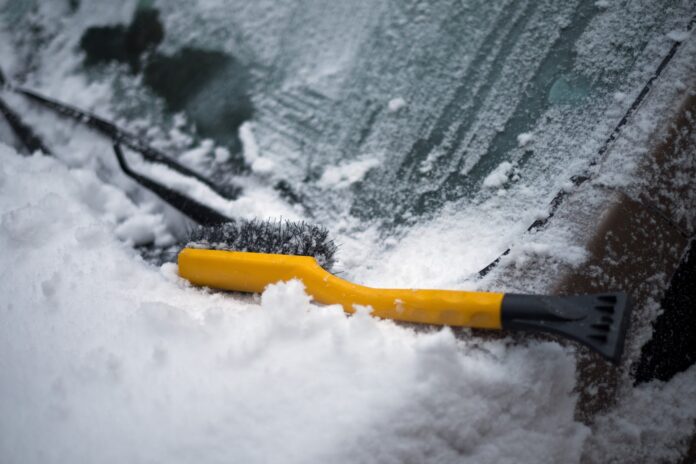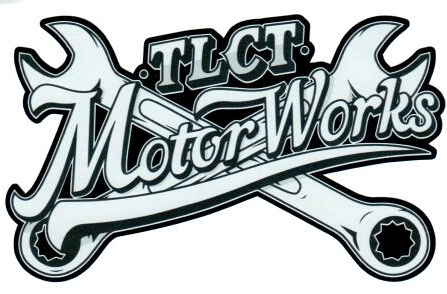There are different schools of thought when you ask someone about “winterizing a vehicle” — there are different techniques and tips based on the application: Farm Equipment, Boat, Plane the rarely and regretfully purchased Jet-Ski that sits 360 days of the year. But I’ve found very little on recommendations for winterizing your Track Toy.
Since not all track toys are created equal and not all are kept indoors – and if they are… they’re not generally climate controlled – these tips should help in some of the most general winter storage situations. After researching and compiling what I thought were some “good ideas” borrowed from other vehicle storage recommendations, here are some things you should consider as winter’s temps have started off and maintain at or below freezing.
Replace or Refill ALL of your fluids
Coolant – is especially important, making sure you have the correct mixture of anti-freeze and water in your system is crucial for that initial startup during or after the spring thaw. A lot of drivers choose to use pure water, or water + an additive (like Redline’s “water wetter”). Non-glycol based fluids at the track are awesome as they require little to no clean up, aren’t slippery and don’t cause your fellow drivers to careen off track when a hose tragically bursts.
Btw, Air-cooled 911 folks stopped paying attention at the word “coolant.” Meanwhile, The downside to water (+ additives) is that they will still freeze. Which can lead to hoses cracking and costly cylinder head gasket malfunctions. If you still happen to have the original owners manual for your vehicle laying around, check it for the proper mixture ratio for your engine. You can also pick up a tester at auto parts stores like Advanced or AutoZone to make sure everything is up to par.
Oil – Ever wondered what the “5w-” means on your bottle of oil? Most oils on the shelves today are “Multigrades”, which simply means that the oil falls into 2 viscosity grades (i.e. 5w-40)
Multigrades were first developed some 50 years ago to avoid the old routine of using a thinner oil in winter and a thicker oil in summer. In a 5w-40 for example, the 5w bit (the W actually stands for winter) simply means that the oil must have a certain maximum viscosity (flow) at low temperature. The lower the “W” number the better the oil’s cold temperature/cold start performance. The 40 in a 5w-40 means that the oil must fall within certain viscosity limits at 100°C (212°F). This is a fixed limit and all oils that end in 40 must achieve these limits. Once again the lower the number, the thinner the oil: a 30 oil is thinner than a 40 oil at 100°C. Again checking your owners manual will specify whether a 30, 40 or 50 is required for your engine. Some mechanics will recommend switching to a thinner oil before packing your Track Toy up for the winter. If your motor can accommodate “conventional oil” I’d recommended switching to that for storage (plus a cost saving since this oil change is temporary). This will make that initial startup easier during the thaw.
Note: Getting your oil tested (oil analysis) is also recommended just to make sure there was no internal hemorrhaging in the motor after the thaw.
Wiper Fluid – If you still happen to have a wiper fluid tank in your car (or maybe you’ve converted it to a water-meth fogger reservoir), You should consider putting freeze-resistant wiper fluid in the tank to keep the (often) plastic reservoir from cracking. — At the track, I know people that will keep their washer tanks active and only fill with water; this reservoir is often overlooked. Since the hoses used for wiper tanks are generally equivalent with aquarium / hospital grade air-tubing, they are more prone to fail in hot temps than cold so not much to worry about there.
Brake Fluid & Pads – Most track inspections will require you to state “when was the last time your vehicle’s brake fluid was flushed” — on average a DOT-4 Fluid like ATE Gold (or Blue if you still happen to have some) and Motul 600 should be changed at minimum 3-4 times a season. More durable fluids like Castrol SRF and Motul 660 are often changed once or twice a season. But how do those fluids hold up over the winter? Not well, actually. Their tendency is to draw water and do not operate at their preferred temperatures during the colder months. Same can be said about the brake pads (track pads need to be hot to operate properly).
Switching back to the OE spec fluid and a mild street pad for winter months (if your car is still street legal) is preferred. This also gives you an opportunity to flush out those last months of the track season, before you prepare for next season. If you car doesn’t see road use, don’t worry about the Pads so much as the fluid. Regular brake fluid flushes is a good idea and should be part of your regimen anyway. A bottle of DOT-3 from a local parts store only costs a few dollars and is a cheap way to dump consumed race fluid.
Tires – Wait, I have to worry about those black rubbery things that keep me connected to the track surface? Yes, you should be concerned with the air pressures and the type of tire you have the car sitting on. First off, if you happen to use Slicks (Hoosiers, Conti’s, etc). *NEVER* store your car with the slicks on the vehicle. Slicks have a reputation of not holding air and with such rigid sidewalls won’t give you an indication that they are flat. If you have a spare set of wheels, preferably with a cheap set of all-seasons; throw those on if your car is just rolling around on the trailer or the garage. Also note, that Slicks and some R-comps generally need a minimum ambient temp of 45 degrees to be “sticky” when in use. Its also advised with ANY Slick, R-comp or Super High-End Summer tire that they be kept in slightly warmer areas (stacked is OK) during the colder months, but not outdoors. This will keep them from freezing/cracking.
Air Pressure – If your car isn’t driven on the street and sits during the off season, make sure you (over)-inflate the tires to a higher pressure than you would normally use. For instance: 40-42 PSI. Choosing to over inflate a tire on a vehicle that doesn’t move for 3-4 months means the tires won’t be completely flat if you need to move it, and will fair better during the temperature swings of winter (usually from cold to bitter, and back). If you’re running street tires and your car sees street use, consider bumping your tire pressures up 3-4 PSI to keep up with the season, or consult your owners manual for winter pressure recommendations. Some also suggest switching to nitrogen instead of “air” during the cold months as it’s less susceptible to temperature changes.
Battery – I won’t go into what techniques are specific to which type of battery (lead-acid, dry-cell, AGM, etc) but what I will recommend is for Track Cars that don’t move much during the winter months pickup a battery tender (one appropriate for your battery type) and keep that connected to the vehicle. It will save your investment and the car will have enough juice to fire up if you need it to. Make sure you get a “self regulating” battery tender that will hibernate when it senses the battery is full, this will keep it from overcharging.
If the car sits outside, I recommend a “solar battery tender” which you can throw on the dash, or wherever there is a lot of sun hitting the car to keep the battery alive (make sure you put it inside the car, locked, so someone doesn’t walk off with it). Battery Tender (brand) makes a really great product that won’t overcharge the battery; and will cut power if it senses the battery is full.
If you happen to still use a “lead-acid” battery, make sure to check the fluid levels in the battery before storing the car. Check your manual or online for procedures on how to do that; and moreover, if you’re still using a lead-acid battery for your track car consider switching to a dry-cell or AGM battery as these are safer for track use.
Fuel – There is a great debate that ensues when you talk about “winterizing fuels.” From my research it seems as though there are really a couple of things you should consider if you go down this route (note: this is only recommended for a car that sits for long periods)
Dry out the system: You can “dry out” your fuel system by adding a water-removing additive, which can be picked up at your local parts store. These Isopropanol additives remove existing water from your fuel system. Make sure that your tank is at least half full and pour in a bottle of the additive before storing the vehicle.
Change the Fuel Filter: Installing a fresh, clean fuel filter helps remove trapped particles and pooled water (more likely on a diesel, but important to note). Old filters will clog more easily during the thaw.
Fuel Injector Cleaner: You can also opt to use Fuel Injector Cleaner (Techron, Penray, etc). These products address injector gumming and lubrication.
Some will argue that just “keeping the tank full” will prevent anything from happening to your engine and fuel system and others say keeping the fuel system clean and dry will provide easier starting, resulting in less battery and starter wear after the thaw.
Rubber Components – It’s always advised to check (and recheck after a heat cycle or two) all of the rubber components on the vehicle: Belts, Hoses, Motor Mounts and even Suspension Bushings and CV boots. You should be looking for signs of dry rot or cracking. If you see evidence of this, make sure to replace those components before setting off for next season.
Warm Up Procedures – there are two warm-up categories: Ancient and Modern
Ancient: Carbureted cars (generally 1986 or older) – Turn the ignition key on, push the throttle to the floor 3-5 times slowly. The first pump allows the choke to close or set, and each subsequent pump primes the engine. Take your foot off the throttle, crank the engine until it starts. Allow the engine to “fast idle” (1200 rpms or so) for 5 minutes. During the warm up, do NOT blip the throttle or drop the fast idle; this will disengage the choke.
Modern: Fuel Injected cars (generally 1986 or newer) – Start the car. Do NOT pump the throttle, do NOT push the throttle during cranking, just turn the key and start. Allow the motor to idle for a few minutes then begin driving. There are debates about how long a fuel injected car should run before you set off, people will argue the vehicle heats up quicker when you drive it than idling. If you choose to set off, drive easy for the first 5 miles or so to get everything up to operating temperature. There are also some wives tales that state: letting the car idle for 5-10 minutes before setting off gives the headgasket (and corresponding dissimilar metals) and opportunity to get *some* warmth in them; avoiding a possible blown head gasket.
I hope that these tips and techniques prove useful and keep your Track Toy safe during these frigid days, I look forward to seeing everyone out there for the initial track events during the March/April thaw.
Good Luck and Stay Warm.























